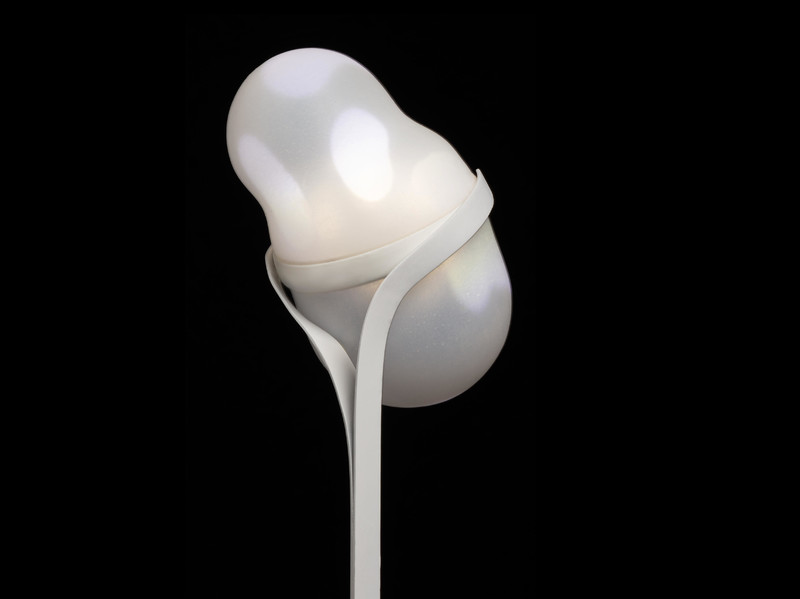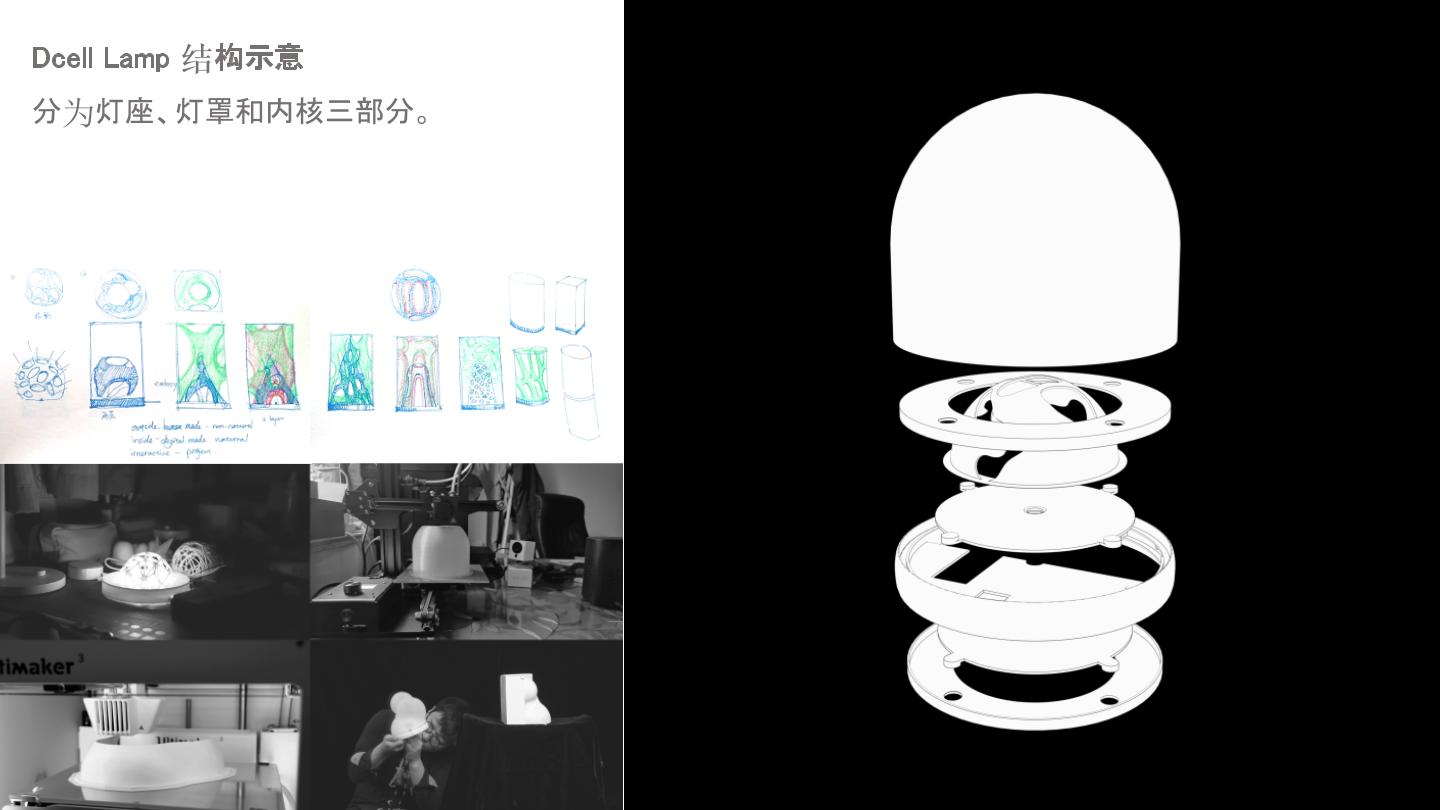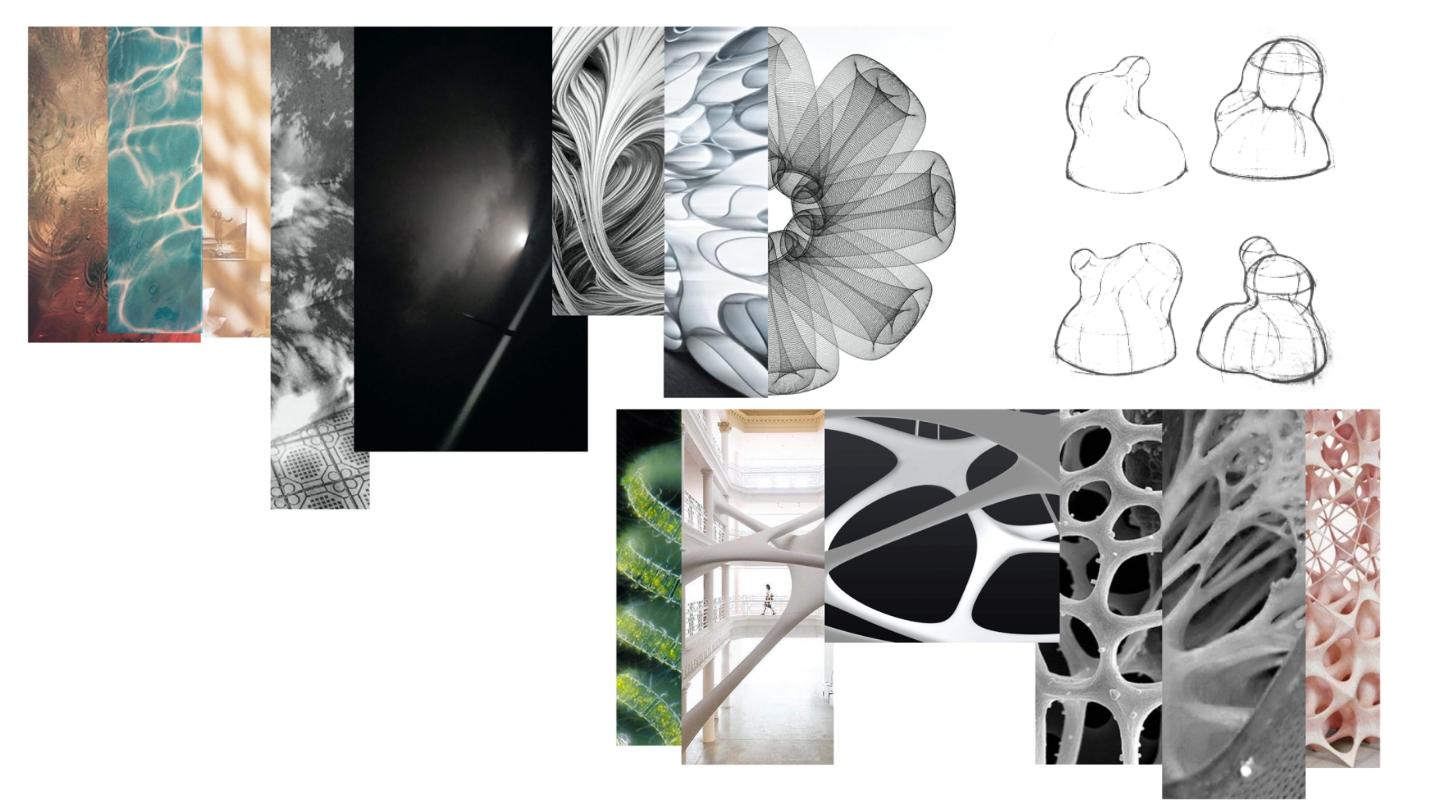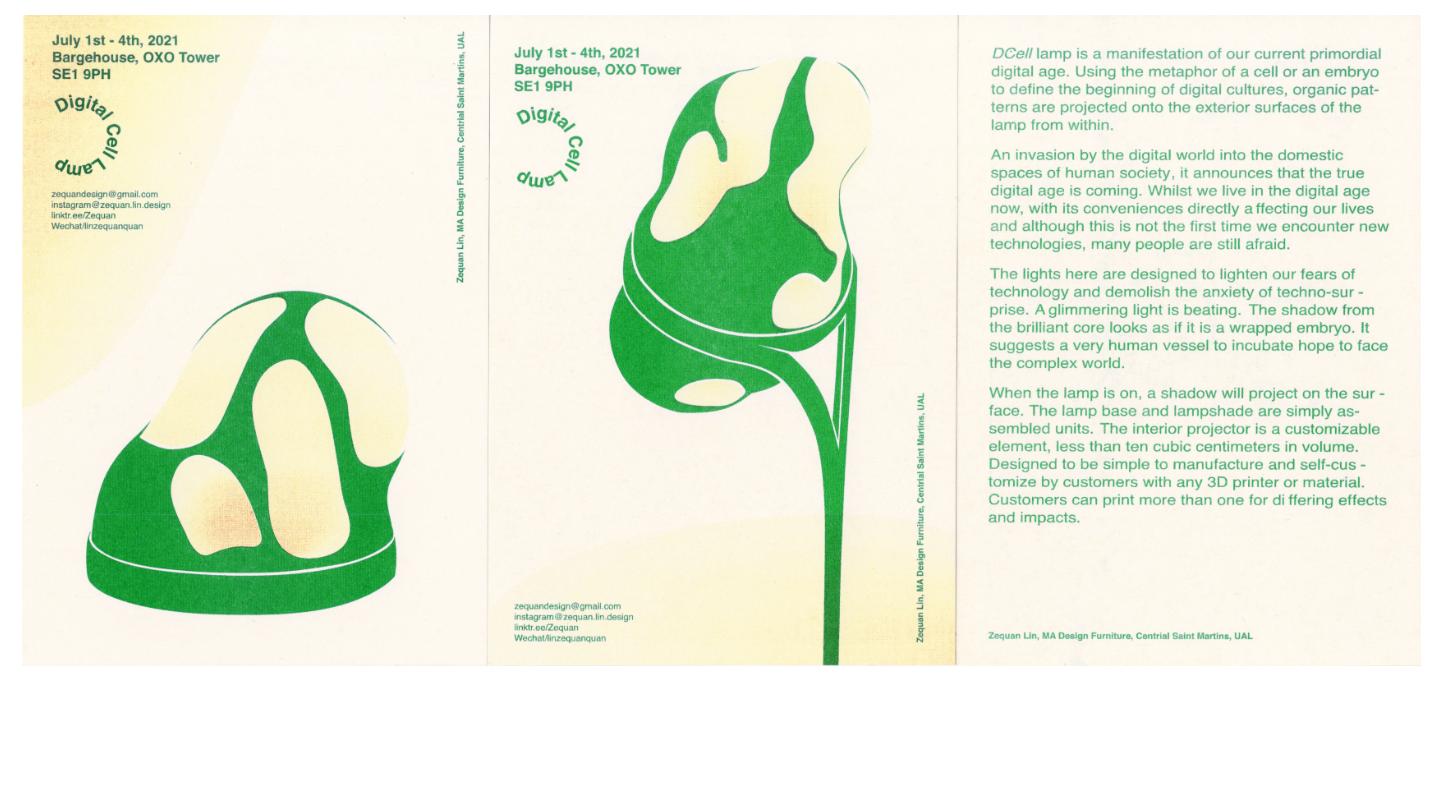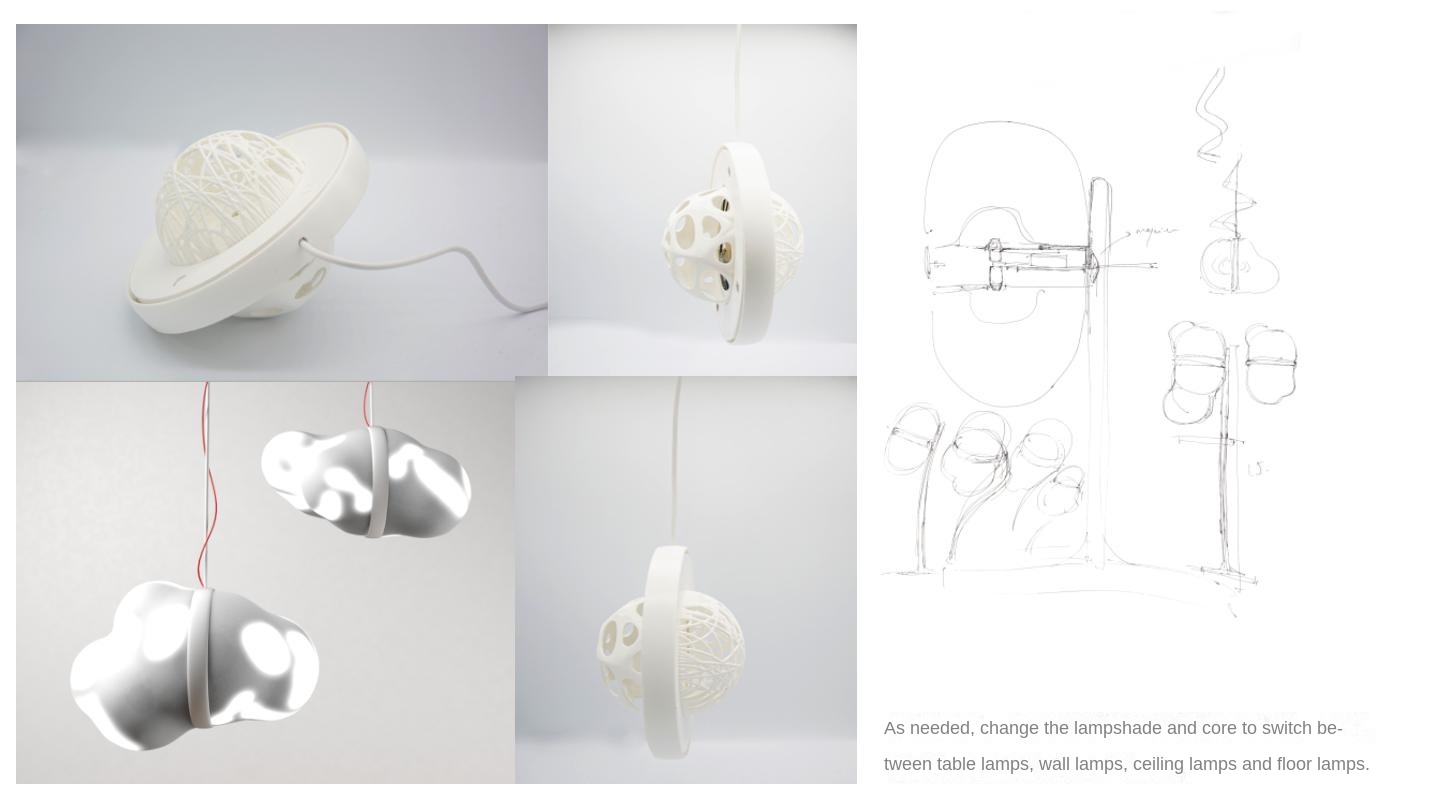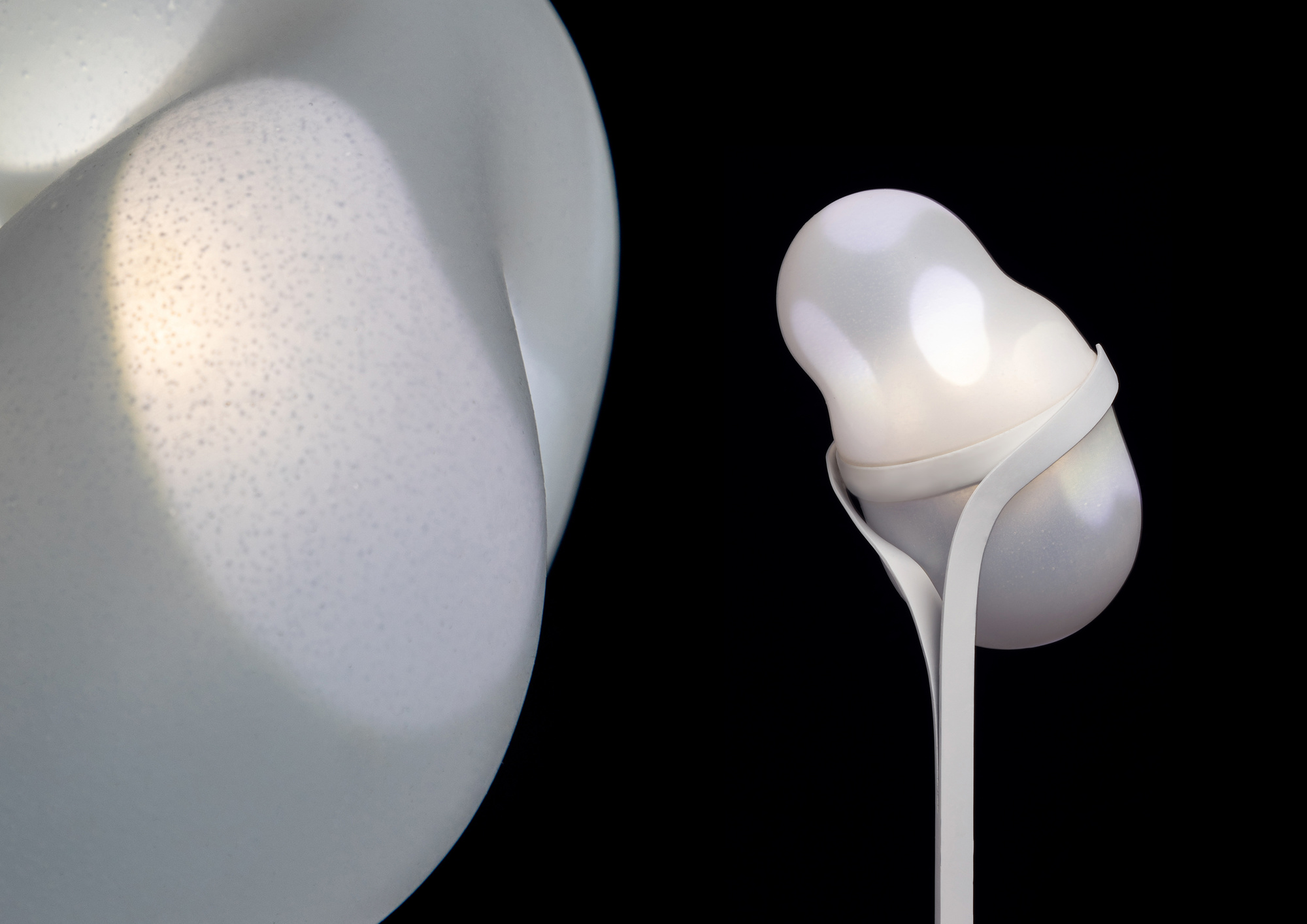
Dcell lamp
The surface of the lampshade is textured by the internal components.

Dcell lamp
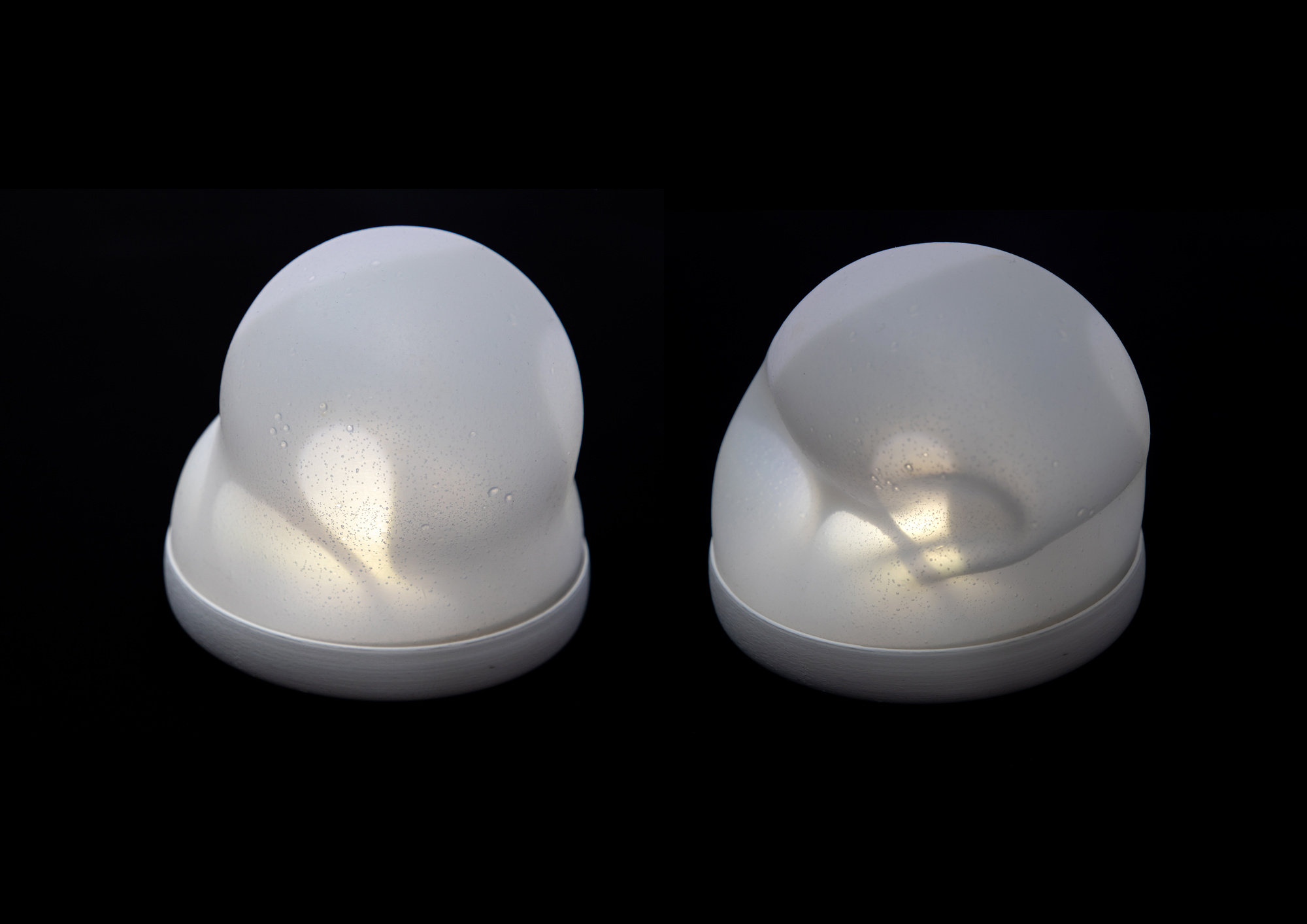
The soft surface of the DCell Lamp
Surface soft can knead interaction, when the shape changes, the shape of the surface projection also changes.
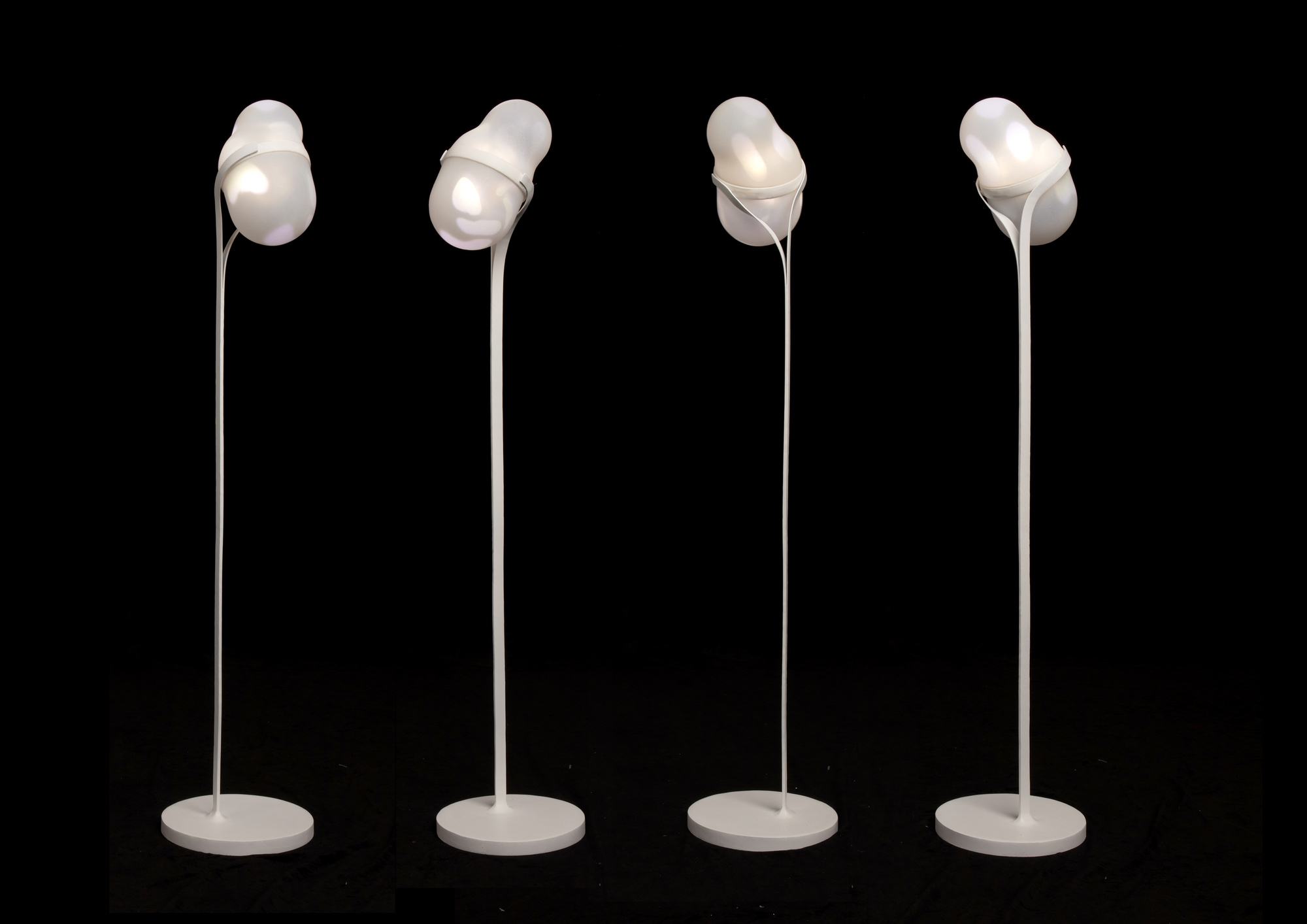
DCell Lamp Vertical
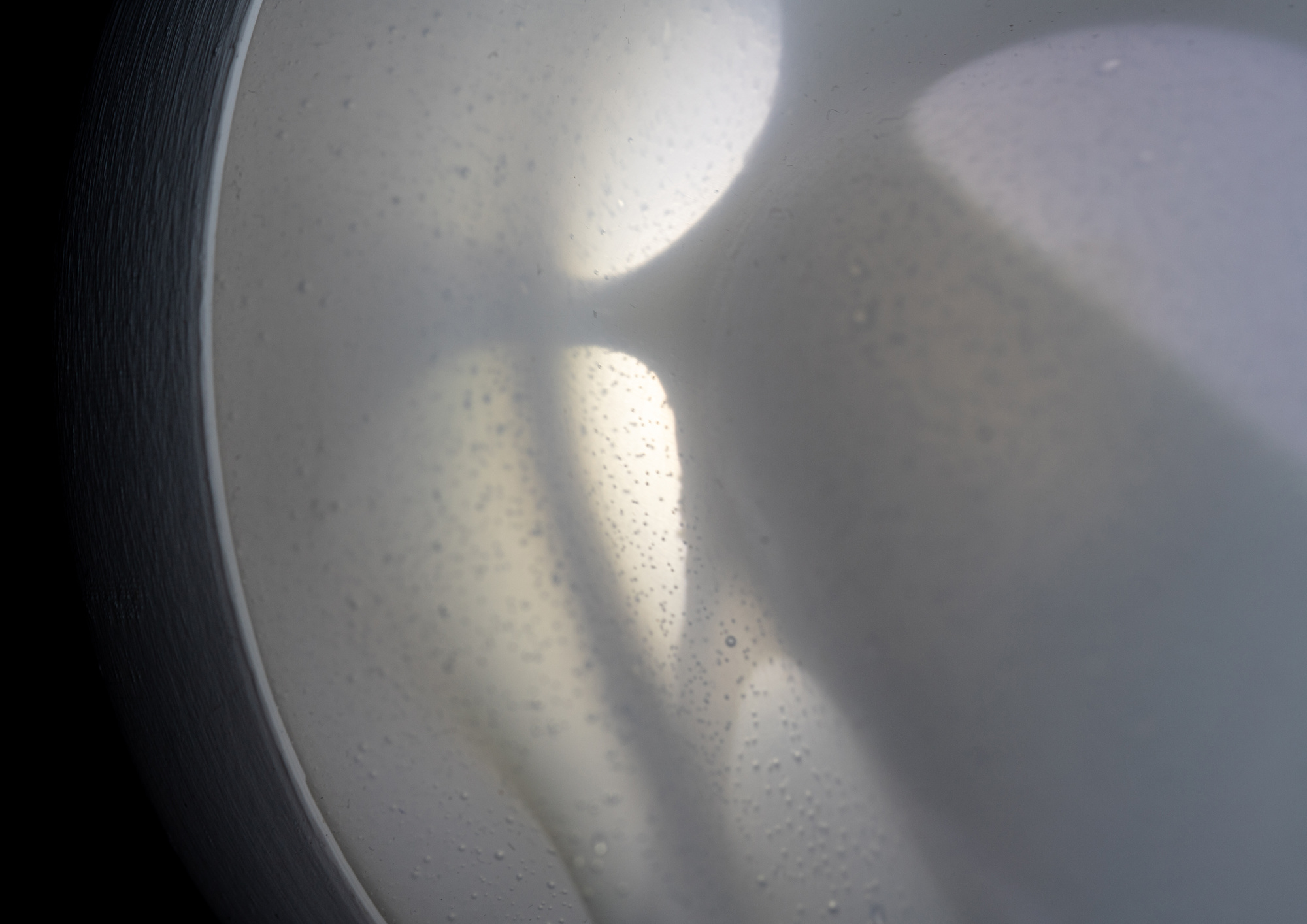
DCell Lamp surface texture
The surface has a bubble texture, like an embryo.
Dcell Lamp and Social Activities
Encourage public participation and improve social awareness. Involvement of users in manufacturing.
Dcell Lamp Other Information
DCell Lamp conveys the characteristics of the original digital intelligence era. Human society and digital civilization are mapped to each other, and the beginning of digital civilization is defined by cell or embryo as metaphor. Projecting organic patterns from the inside to the external surface of the lamp is an intrusion of digital civilization into human society and space, announcing the arrival of the era of digital intelligence for mutual communication. Although we are now in the era of digital intelligence, and its convenience directly affects our lives, every technological innovation still makes many people feel confused and afraid. DCell Lamp hopes to guide people to the ever-changing digital technology through soft lighting. The light allows us to face the update of technology and eliminate the anxiety caused by technological mutations. The shadow cast from the bright core seems to be a wrapped embryo, and each flicker of light suggests a container of superhuman hope to face this complex world. Dcell Lamp is divided into three parts: lamp holder, lampshade and kernel. The edge of the core is sharp, which is the separation of products and life under digital design. However, through the light and shadow on the surface, the projection of the sharp edge also becomes soft. The lampshade is made of silicone, encouraging people to interact with it, touch, squeeze, change the pattern of light and shadow over time, and release and accept the changing mood. As needed, change the lampshade and core to switch between table lamps, wall lamps, ceiling lamps and floor lamps. When the lamp is turned on, the shadow will be cast on the surface of the lampshade, forming a customized pattern. Users can use any 3D printed object or other material to achieve different effects and effects. Digital products, the organic collaborative design and production of human and machine is the infinite expectation of the future.
My design practice is deeply rooted in the soil of Chinese society, and I am committed to exploring how design can respond to social needs and become a bridge connecting tradition and modernity, technology and humanity. Take "DCell Lamp" as an example, this lamp is not only a lighting tool, but also a petri dish in the era of digital intelligence. It uses cells or embryos as a metaphor, symbolizing the origin of digital civilization, and tells the story of the interweaving of digital technology and human life through the organic patterns projected inside. Artificial intelligence is shaping the logic of digital civilization, while robots, 3D printing and other mechanical devices give them the ability to physically replicate themselves. We are in an era of establishing a new order, and a future in which numbers and reality coexist is quietly taking shape.
At the same time, the rapid development of Chinese society has led to the vigorous vitality of upstream and downstream industries, but it has also left some potential crises, just like the marks left by geese. For example, issues such as resource consumption, scientific and technological waste disposal, job changes, and psychological identity ethics are all challenges that we cannot ignore in our pursuit of progress. In addition to cutting-edge scientific and technological progress, scientific and technological innovation has also brought about social phenomena and changes. In order to jointly realize the sustainable development of society, I pass the temperature of science and technology to the public through the exhibition of works and holding activities, and continue to integrate new technologies into applications to alleviate the confusion caused by huge mutations. It has been my pursuit to bring cold digital technology into people's lives in a physical and gentle way.
Lin is a teacher and designer of the School of Creativity and Innovation of Xiamen University. He graduated from the Central Saint Martins School of Art and Design, University of the Arts London. His design practice and teaching research focuses on furniture design, book design and cross-cultural design, and is committed to exploring the integration of traditional skills and modern technology, as well as the role of design in cultural inheritance and innovation. With innovation and cultural integration as the core, he discusses the humanistic care and sustainability in the era of digital intelligence, and explores the relationship between emotional expression and functional realization of design, so as to trigger thinking about future design.







